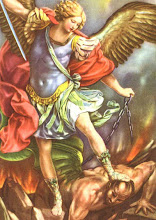SUSAN HASHINS NOT TELL THE TRUTH ABOUT CELSUS AND LUTHER
From Susan Haskins-Mary Magdalene-Myth,Model and Metaphor.
Michael Baigent and his fellow writers of The Holy Blood and the Holy Grail (a book which was a major influence on Dan Brown) were not the first to posit a relationship Mary Magdalene:between Mary Magdalene and Christ. The pagan Celsus suggested it in the third century and, much later, even Luther suggested that they had a sexual relationship. Is this because people find it difficult to accept the single independent female, as Mary Magdalene is described in Luke's Gospel, and one who may also have been wealthy, since she contributed, along with the other women, of her own means to bankroll the Jesus movement? Or is it because there is a desire to evoke Christ's own sexuality, making him a more human man?
Susan Huskins not tell the truth,really not.
Celsus and Luther never say about Jesus and Mary Mgdalene lovers.
Celsus in ORIGENE-CONTRA CELSUM-mention Mary Magdalene only about the Jesus resurrection-in book II,59 and II,70.In Celsus there is nothing about Jesus and
Mary Magdalene lovers.
Luther say nothing about Jesus and Mary Magdalene lovers.
Matthew Becker
A recent New Yorker article on Mary Magdalene, obviously written with an eye on her role as Jesus' paramour in Dan Brown's best-selling The Da Vinci Code, began by noting that "Brown is by no means the first to have suggested that Christ had a sex life--Martin Luther said it" (February 13-20). Bruce Chilton, an Episcopal scholar from Bard College, also makes this claim about Luther in Mary Magdalene: A Biography (2005). And a 2003 story in Time magazine declared that "Martin Luther believed that Jesus and Mary Magdalene were married."
Did Luther really make these assertions? An electronic search of the digital edition of Luther's works, the massive Weimar Ausgabe (WA), uncovers no evidence that he did. Only two statements come even close to suggesting these unorthodoxies.
The first is a comment on Psalm 119:145 in which Luther interprets Mary Magdalene's actions at the tomb of Christ as an example of loving devotion. Mary "came beforehand at the dawn and with untimely haste and cried and called for her betrothed [sponsum] much more wonderfully in spirit than in the body. But I think that she alone might easily explain the Song of Songs."
Luther's Works: American Edition (LW) unfortunately mistranslates sponsum as "husband." In Luther's medieval monastic context, the word meant something different. The verb spondeo means "to pledge oneself to" or "to promise oneself to someone," as in "to pledge in the vow of marriage." The male form of the noun is "fiance" and the female form is "bride."
The full context of Luther's remark indicates that he was thinking allegorically. Influenced by mainstream allegorical interpretations of the Song of Songs, Luther viewed Mary as the prototypical disciple (a celibate nun?), the first "bride of Christ," who had made her vow of unconditional love and obedience to her sponsum ("betrothed," "groom"). Even today Roman Catholic nuns wear a ring to symbolize their betrothal to Christ. On another occasion Luther argued that all Christians are "brides of Christ" (LW 28:48). He certainly did not think Jesus and Mary were actually husband and wife. Several unambiguous statements in his writings clearly indicate that he held the traditional view that Jesus, like Paul, was celibate and chaste.
IN CELSUS THERE IS NOTHING ABOUT JESUS AND WOMEN LOVER
In Origen "Contra Celsum"-Mary Magdalene,is only mentioned about the Jesus resurrection.From CLASSICI U.T.E.T-ORIGINE-CONTRO CELSO-Mry Magdalene is
mentioned in book II,59,p.193-and in book II,70,p.205-about the Jesus resurrection.
In Celsus there is nothing about Jesus and Mary Magdalene lover,and Jesus and
women lover.
CELSUS-IN ORIGEN"CONTRA CELSUM"-JESUS WOMEN-DISCIPLE
A 2nd-century Greek, Celsus, wrote a True Discourse attacking the Christian sects as a threat to the Roman state. At the time he was writing, c. AD 178, the variety of Christian sects was still extremely broad. His treatise is lost, but quotes survive in the attack written somewhat later by Origen, Contra Celsum ("Against Celsus"): "While some of the Christians proclaim [that] they have the same god as do the Jews, others insist that there is another god higher than the creator-god and opposed to him. And some Christians teach that the Son came from this higher god. Still others admit of a third god - those, that is to say, who call themselves gnostics - and still others, though calling themselves Christians, want to live according to the laws of the Jews. I could also mention those who call themselves Simonians after Simon, and those naming themselves Helenians after Helen, his consort. There are Christian sects named after Marcellina, Harpocratian Christians who trace themselves to Salome, and some who follow Mariamne and others who follow Martha, and still others who call themselves Marcionites after their leader, Marcion."
ARTICLES AGAINST DA VINCI CODE
Iscriviti a:
Commenti sul post (Atom)


Nessun commento:
Posta un commento